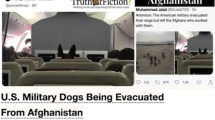Abstract
The spread of the COVID 19 virus has dramatically impacted global society by modifying its lifestyle. Social networks, video streaming tools, virtual collaborative environments have been the primary source of communication through the Internet. This suspension of the “real” has led all activities to be declined through new places and contexts of virtual discussion, increasing new problems, including the most important related to the spread of so-called Fake News. The spread of such news can be devastating: consider what is happening during the critical vaccination phase for COVID 19. In this scenario, systems able to recognize, in a practical way, the truthfulness of news are becoming more and more valuable.
This paper aims to present an approach that combines probabilistic and machine learning techniques such as Latent Dirichlet Allocation and K-NN in combination with Context-Awareness techniques to identify the veracity of the news. Adopting Context-Awareness techniques within the proposed system allows a better definition of the operational context Fake News refers to, reducing the problems of semantic polysemy. The first results obtained through standard datasets or using data from real contexts are very interesting and promising.
Access this chapter
Tax calculation will be finalised at checkout
Purchases are for personal use only
Similar content being viewed by others
References
di Renzo, L., et al.: Eating habits and lifestyle changes during COVID-19 lockdown: an Italian survey. J. Transl. Med. 18(1) (2020). https://doi.org/10.1186/s12967-020-02399-5
Herrera-Peco, I., et al.: Antivaccine movement and COVID-19 negationism: a content analysis of Spanish-written messages on Twitter. Vaccines 9(6) (2021). https://doi.org/10.3390/vaccines9060656
York, C., Ponder, J.D., Humphries, Z., Goodall, C., Beam, M., Winters, C.: Effects of fact-checking political misinformation on perceptual accuracy and epistemic political efficacy. J. Mass Commun. Q. 97(4) (2020). https://doi.org/10.1177/1077699019890119
Shu, K., Sliva, A., Wang, S., Tang, J., Liu, H.: Fake news detection on social media. ACM SIGKDD Explor. Newsl. 19(1) (2017). https://doi.org/10.1145/3137597.3137600
Allcott, H., Gentzkow, M.: Social media and fake news in the 2016 election. J. Econ. Perspect. 31(2) (2017). https://doi.org/10.1257/jep.31.2.211
Zhou, X., Zafarani, R.: A survey of fake news: fundamental theories, detection methods, and opportunities. ACM Comput. Surv. 53(5) (2020). https://doi.org/10.1145/3395046
Sahoo, S.R., Gupta, B.B.: Real-time detection of fake account in Twitter using machine-learning approach. In: Gao, X.-Z., Tiwari, S., Trivedi, M.C., Mishra, K.K. (eds.) Advances in Computational Intelligence and Communication Technology. AISC, vol. 1086, pp. 149–159. Springer, Singapore (2021). https://doi.org/10.1007/978-981-15-1275-9_13
Przybyła, P.: Capturing the style of fake news (2020). https://doi.org/10.1609/aaai.v34i01.5386
Nagaraja, A., Soumya, K.N., Naik, P., Sinha, A., Rajendrakumar, J.V.: Fake news detection using machine learning methods (2021). https://doi.org/10.1145/3460620.3460753
Ozbay, F.A., Alatas, B.: Fake news detection within online social media using supervised artificial intelligence algorithms. Physica A: Stat. Mech. Appl. 540 (2020). https://doi.org/10.1016/j.physa.2019.123174
Shu, K., Liu, H.: Detecting fake news on social media. Synthesis Lectures Data Min. Knowl. Discov. 11(3) (2019). https://doi.org/10.2200/s00926ed1v01y201906dmk018
Blei, D.M., Ng, A.Y., Jordan, M.I.: Latent Dirichlet allocation. J. Mach. Learn. Res. 3(4–5) (2003). https://doi.org/10.1016/b978-0-12-411519-4.00006-9
Clarizia, F., Colace, F., Lombardi, M., Pascale, F., Santaniello, D.: Sentiment analysis in social networks: a methodology based on the latent Dirichlet allocation approach, August 2019. https://doi.org/10.2991/eusflat-19.2019.36
Colace, F., Casaburi, L., de Santo, M., Greco, L.: Sentiment detection in social networks and in collaborative learning environments. Comput. Hum. Behav. 51 (2015). https://doi.org/10.1016/j.chb.2014.11.090
Hu, Q., Yu, D., Xie, Z.: Neighborhood classifiers. Expert Syst. Appl. 34(2) (2008). https://doi.org/10.1016/j.eswa.2006.10.043
Dong, W., Charikar, M., Li, K.: Efficient K-nearest neighbor graph construction for generic similarity measures (2011). https://doi.org/10.1145/1963405.1963487
Jiang, L., Cai, Z., Wang, D., Jiang, S.: Survey of improving K-nearest-neighbor for classification. In: Proceedings - Fourth International Conference on Fuzzy Systems and Knowledge Discovery, FSKD 2007, vol. 1 (2007). https://doi.org/10.1109/FSKD.2007.552
Weinberger, K.Q., Saul, L.K.: Distance metric learning for large margin nearest neighbor classification. J. Mach. Learn. Res. 10 (2009). https://doi.org/10.1145/1577069.1577078
Kesarwani, A., Chauhan, S.S., Nair, A.R.: Fake news detection on social media using k-nearest neighbor classifier (2020). https://doi.org/10.1109/ICACCE49060.2020.9154997
Casillo, M., Conte, D., Lombardi, M., Santaniello, D., Valentino, C.: Recommender system for digital storytelling: a novel approach to enhance cultural heritage. In: Del Bimbo, A., et al. (eds.) ICPR 2021. LNCS, vol. 12667, pp. 304–317. Springer, Cham (2021). https://doi.org/10.1007/978-3-030-68787-8_22
Colace, F., Lombardi, M., Pascale, F., Santaniello, D.: A multi-level approach for forecasting critical events in smart cities (2018). https://doi.org/10.18293/DMSVIVA2018-002
Clarizia, F., Colace, F., de Santo, M., Lombardi, M., Pascale, F., Santaniello, D.: A context-aware chatbot for tourist destinations. In: 2019 15th International Conference on Signal-Image Technology & Internet-Based Systems (SITIS), pp. 348–354, November 2019. https://doi.org/10.1109/SITIS.2019.00063
Fariña, A., Brisaboa, N.R., Navarro, G., Claude, F., Places, Á.S., Rodríguez, E.: Word-based self-indexes for natural language text. ACM Trans. Inf. Syst. 30(1) (2012). https://doi.org/10.1145/2094072.2094073
Wilson, A.T., Chew, P.A.: Term weighting schemes for latent Dirichlet allocation (2010)
Casillo, M., et al.: A multi-feature Bayesian approach for fake news detection. In: Chellappan, S., Choo, K.-K., Phan, NhatHai (eds.) CSoNet 2020. LNCS, vol. 12575, pp. 333–344. Springer, Cham (2020). https://doi.org/10.1007/978-3-030-66046-8_27
Kula, S., Choraś, M., Kozik, R., Ksieniewicz, P., Woźniak, M.: Sentiment analysis for fake news detection by means of neural networks. In: Krzhizhanovskaya, V.V., et al. (eds.) ICCS 2020. LNCS, vol. 12140, pp. 653–666. Springer, Cham (2020). https://doi.org/10.1007/978-3-030-50423-6_49
Bhutani, B., Rastogi, N., Sehgal, P., Purwar, A.: Fake news detection using sentiment analysis (2019). https://doi.org/10.1109/IC3.2019.8844880
Mitra, T., Gilbert, E.: CREDBANK: a large-scale social media corpus with associated credibility annotations (2015)
Author information
Authors and Affiliations
Corresponding author
Editor information
Editors and Affiliations
Rights and permissions
Copyright information
© 2021 Springer Nature Switzerland AG
About this paper
Cite this paper
Casillo, M., Colace, F., Gupta, B.B., Santaniello, D., Valentino, C. (2021). Fake News Detection Using LDA Topic Modelling and K-Nearest Neighbor Classifier. In: Mohaisen, D., Jin, R. (eds) Computational Data and Social Networks. CSoNet 2021. Lecture Notes in Computer Science(), vol 13116. Springer, Cham. https://doi.org/10.1007/978-3-030-91434-9_29
Download citation
DOI: https://doi.org/10.1007/978-3-030-91434-9_29
Published:
Publisher Name: Springer, Cham
Print ISBN: 978-3-030-91433-2
Online ISBN: 978-3-030-91434-9
eBook Packages: Computer ScienceComputer Science (R0)




